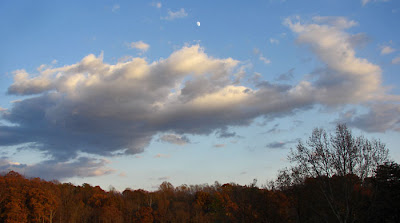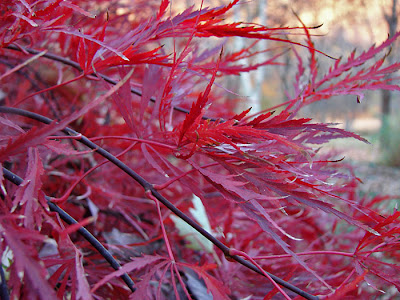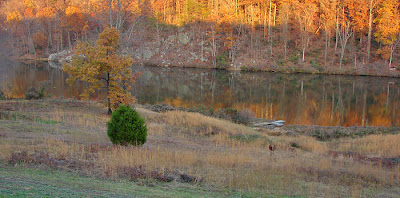 November Sky At Dusk, © Joan Z. Rough, 2007
November Sky At Dusk, © Joan Z. Rough, 2007The downside of loss ... we can't let go ... loss of a close relative, loss of time, loss of a job, loss of control. We hang onto yesterday and long for tomorrow. We set rules and regulations within our heads that tell us the way things should be. We only like things a certain way whether it's an arrangement of furniture or someone else's outfit for the day. The world ends if the dinner burns, our flight is canceled or we break a favorite piece of china. We're all losers. We lose something every day. We hang on to everything so tightly that we forget that things change moment by moment and that we will never pass this way again. We're lost.
The Upside of loss ... we can let go. There isn't so much to worry about. We don't have to carry all that "stuff." We feel more spontaneous, can wear the skimpy dress rather than the heavy sweater and long skirt. We laugh more. We cry more. We aren't as tired and sleep better. We have compassion for our neighbors, watch the sunrise, mend the broken china, catch a later plane, breathe more deeply, smell the roses ... experience each day as a new adventure with losses to be mourned, and gains to be proud of. We may still be losers, lost in the woods, but it's much more fun.












